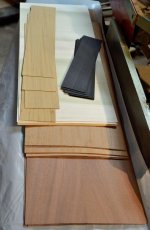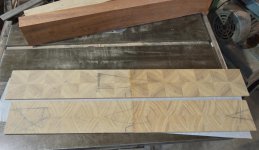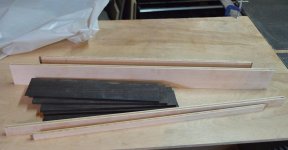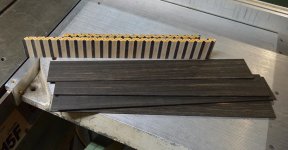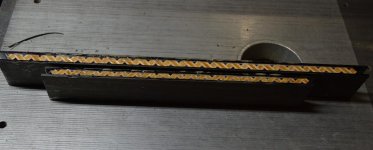The updates to CITES now involve everything in the Dalbergia genus, so is all ebony in the Diospyros genus and mahogany in the Swietenia genus.
All together that`s a pretty large chuck of what traditionally has been thought of as top quality woods for cue building.
Deep red/brown woods and most importantly black woods now seems to be few and far between.
There are plenty of woods to choose from, but many of the woods now left for us to use, I suspect wouldnt be used that much if availability and regulations where not an issue.
I have ordered alot of different woods now that I wouldn`t really order if the traditional stuff was available and legal.
I just turned some Katalox, wich I guess is about the darkest of the woods available now (I guess you can count in Macassar Ebony and Ceylon Ebony, but they are more brown than black...)
Katalox is pretty to look at, but really dense (Janka hardness of 3660lb/f) and it dulls cutter blades alot faster than African Blackwood or Ebony.
I turned some Pau Ferro too and it can be quite pretty, but it`s more light brown and has none of the deep red in it, that makes Cocobolo or Brazilian Rosewood so attractive. Pau Rosa has a more honey toned brown and is quite pleasant to look at and machines, glues and takes a finish well.
I`m sure there are lots of woods out there to try, but what do you guys that have been around for a long time think and what`s the plan for the Ebony, African Blackwood and Rosewoods you guys sure have in stock?
All together that`s a pretty large chuck of what traditionally has been thought of as top quality woods for cue building.
Deep red/brown woods and most importantly black woods now seems to be few and far between.
There are plenty of woods to choose from, but many of the woods now left for us to use, I suspect wouldnt be used that much if availability and regulations where not an issue.
I have ordered alot of different woods now that I wouldn`t really order if the traditional stuff was available and legal.
I just turned some Katalox, wich I guess is about the darkest of the woods available now (I guess you can count in Macassar Ebony and Ceylon Ebony, but they are more brown than black...)
Katalox is pretty to look at, but really dense (Janka hardness of 3660lb/f) and it dulls cutter blades alot faster than African Blackwood or Ebony.
I turned some Pau Ferro too and it can be quite pretty, but it`s more light brown and has none of the deep red in it, that makes Cocobolo or Brazilian Rosewood so attractive. Pau Rosa has a more honey toned brown and is quite pleasant to look at and machines, glues and takes a finish well.
I`m sure there are lots of woods out there to try, but what do you guys that have been around for a long time think and what`s the plan for the Ebony, African Blackwood and Rosewoods you guys sure have in stock?


